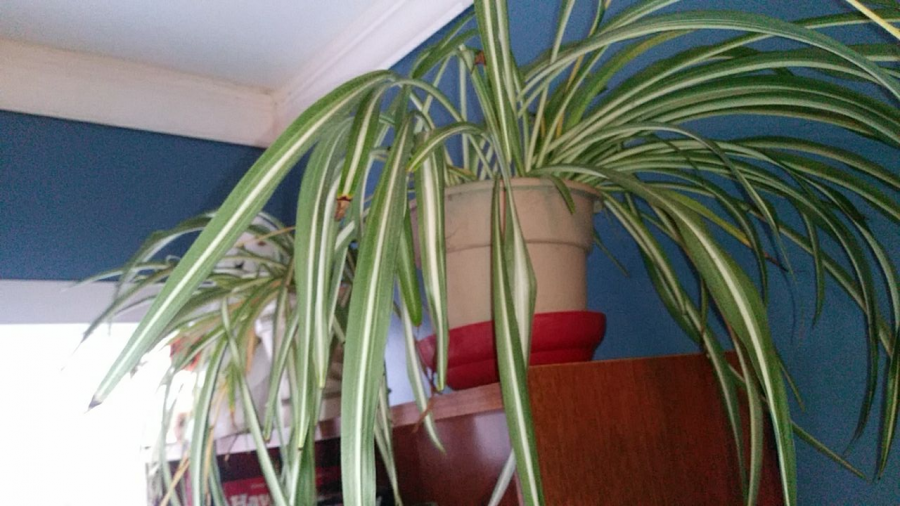This spider you will want in your house
November 5, 2019
As we approach winter, where the air starts to get dry and you cannot open the windows anymore, people tend to rely on plants. Plants produce oxygen while purifying the air by absorbing carbon monoxide, formaldehyde, and xylene. By simply having one of these plants in your room, it will increase productivity, enrich health and well being, and decrease stress by creating a calm environment.
Spider plants are perfect to keep in any room, thanks to their low maintenance. They do not mind infrequent watering and are not particular about types of soil. In addition, they are non-toxic and difficult to kill.
They are a common household plant to keep in a pot or hanging basket simply because they are so easy to keep alive. They are also great for those who do not have a green thumb.
These plants have slender, sword-like leaves that branch out at the center, almost creating the illusion of a crown. Their appearance resembles a spider’s legs.
The leaves are green and white striped and reach a size of about 8-18 inches long, depending on how mature the plant is.
Spider plants, when mature enough, grow stems that produce flowers at the ends. These flowers eventually produce spiderettes, or baby spider plants.
The spiderettes will eventually be able to grow on their own, but when you believe they are going to fall off of the stem, gently break then off the stem and place them in a container of water. Once they form roots, plant them near the “mother” plant.
Allowing for the new plant to be close to its mother will provide supervision and more growth, but you can pot them in a separate container if there is no room.
If the tips of the leaves start to turn brown, don’t freak out. The brown tips occur if the plant receives water with salt in it. The plant alerts you that there is too much salt, so next time you water it, use distilled water.
Fun facts: if you walk down some of the back stairs at the high school, you will see large pots of spider plants used to help filter the air.
They also give off the same chemical effect as catnip, so when cats eat this plant, they will have the same reaction as if they ate catnip.



